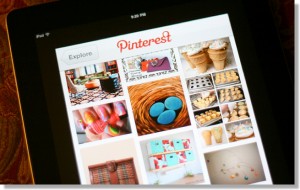Improving the customer experience is about everything from embracing technology in-store to offering click and collect services according to Sanderson’s Retail Insights 2015 report.

To remain competitive in today’s world, retailers have to embrace new ways of doing business – whether through improved delivery options such as click and collect, quicker, convenient payments in-store through contactless payments or combining the power of online in the store environment whilst also learning more from, and getting closer to, their customers through social media. Today a retailer’s focus has to be on making the customer experience easier, better and more memorable than ever.
Key aim – improving the experience for the customer
Why? Because you are more likely to win the sale and the loyalty of the customer in a competitive world if you can provide the best experience possible whether in-store or out.
Step 1 – Where to start – bring online in-store
Ignore the technology customers are using outside and inside your stores can be dangerous. Instead, you should embrace it and all variations of it.
Nearly two thirds (63%) of retailers believe that selling online in-store using ordering solutions such as iPads and kiosks will become commonplace by 2016 (Sanderson Retail Insights Survey 2015.)
John Lewis rolled out more than 4,000 iPads to staff this year.
Benefits of such technology in-store include:
- Extended ranges
- More personalised service
- Staff are able to answer product queries and check stock on the shop floor
- Increased interaction with the customer.
Step 2 – Improve payment methods
The days of queuing at a till are numbered.
How’s it changing and what does that mean?
- In-store technology such as kiosks allow customers to serve themselves.
- iPads allow staff to take payment other than at a traditional till.
- Alternative payment methods (ApplePay, mobile payment, contactless payment) speed up the payment process.
- Rise in contactless over cash for low-value payments reduces resources spent handling cash.
- New technologies – such as mobile phone payments or contactless wristbands – will make contactless payments even quicker in the future. Things can only get better, faster and more convenient for customers.
More than two-thirds (67%) of respondents rated alternative payment methods such as contactless payments as integral to improving the customer experience (Sanderson Retail Insights Survey 2015).
Key Dates:
- July – UK launch of Apple’s own contactless mobile payment service Apple Pay. Nearly two thirds (63%) of consumers say that they would like to use the service.
- Summer – mobile payment provider Zapp will launch its Pay by Bank app to consumers allowing them to make real time payments direct to retailers from their smartphone or tablet.
- September – the contactless card payment limit will rise from £20 to £30 – prompting more customers to pay this way.
Why alternative payment methods add up:
- Spending via contactless payments trebled in 2014 to £2.32 billion, across 319 million transactions, according to the UK Cards Association.
- Total contactless spend in 2014 was more than twice that of the previous six years combined (UK Cards Association).
- £8.26 was the average contactless transaction value in December 2014 (UK Cards Association).
- There were 10 contactless transactions a second in 2014 (UK Cards Association). A rise in contactless limit and contactless card rollout, as well as new initiatives such as mobile contactless payment set to increase that number further.
- Mobile payments are expected to grow by 60% this year, according to the World Payments Report 2014 by Capgemini and RBS.
- By the end of 2015 5% of the base of 600-650 million NFC equipped phones will be used at least once a month to make contactless in-store payments at retail outlets, according to Deloitte.
Step 3 – Assure customers of availability through click and collect
In an ideal world products would be available to the customer when, where and how they want it. In the real world, this is not so easy. The next best solution for retailers to offer is click and collect.
John Lewis reported click and collect deliveries had overtaken deliveries to customers homes for the first time in March 2015, with click and collect up by 47%.
90% of retailers say innovation in click and collect is an important aspect of multi-channel strategy this year (Sanderson Retail Insights Survey 2015).
Step 4 – Listen and learn
81% of retailers believe social media networks can be used as an additional tool for providing efficient customer service (Sanderson Retail Insights 2015).
The adoption of social customer care programmes increased fivefold from 12% in 2010 to 59% in 2013 (Aberdeen Group):
- Responding quickly and efficiently on social media can turn an unhappy customer into a happy one and prevent complaints from going viral.
- It can also engage new fans and create brand advocates.
Retailers should seek to adopt contactless payment throughout their stores, offer click and collect to their customers and bring the online in-store if they want to remain competitive towards 2016 and beyond.
Takeaways:
- Contactless and mobile payments are set to change how customers pay in-store – and retailers must embrace such change
- Click and collect is an essential part of a retailer’s multi-channel strategy in 2015
- Technology is changing customer expectations but they expect retailers to adapt
- Ensure your customer service team recognise the importance of fast, timely responses on social media and the ability to turn complainers into advocates
Learn more about the state of retail in 2015 and beyond by reading: ‘Retail Insights Survey 2015 – Essential Understandings‘.
This post first appeared on the Sanderson blog.
Business & Finance Articles on Business 2 Community(146)
Report Post




